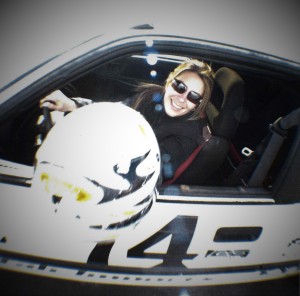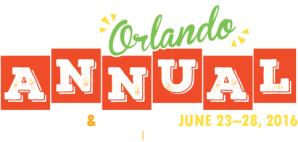Hopefully, most of you have heard by now that the Board of the Association for Library Service to Children (ALSC), a division of the American Library Association (ALA), voted to change the name of the Laura Ingalls Wilder Award to the Children’s Literature Legacy Award. WHY? If you’re like me you’re asking yourself “Why would ALA denigrate and affectively denounce Laura Ingalls Wilder after over 60 years of hailing her as an icon of American children’s literature?” Aren’t they now saying that their predecessors were wrong to ever have named an award in her honor?
Well, as usual, they are claiming that is not what they are doing, but rather; “ALSC works within the context of our society as a whole, where the conversations taking place inform our work and help us articulate our core values and support of diverse populations.” which, in our opinion, equates to blatant internal politics that smack of political correctness. Core values are just that CORE! They don’t change with the tide of public opinion.
How does this kind of drastic change happen? In our decades of experience with organizations, boards, and people in general, it starts by some malcontent activist who thinks they have a right and obligation to right wrongs – as THEY perceive them – regardless of good judgement or common sense. Then they use shame and guilt on their colleagues to advance their argument until they get their agenda past the majority. Did anyone hear about Native American, or people of color groups of protesters picketing ALA conference, or publishing protests about how they were being maligned by Laura Ingalls Wilder? NO!
ALSC/ALA decided on their own opinion that “Her works reflect dated cultural attitudes toward Indigenous people and people of color that contradict modern acceptance, celebration, and understanding of diverse communities.” Using that rationale, why not destroy the Jefferson Memorial in Washington D.C. because Jefferson was a slave owner, and even had extra-marital affairs with his female slaves and produced children from those sexual affairs. Does his personal behavior fit with today’s “…acceptance, celebration, and understanding of diverse communities”? I hope not, but maybe we’re wrong. Since so many of the founding fathers owned slaves, maybe we should tear up the Declaration of Independence and Constitution, even though they contain principles and ideals that built a new democracy that has lasted 242 years, and provided freedom to over 300M people from many “diverse communities”. It sounds like if ALSC/ALA had its way a lot of American institutions and history would be voted out by one of their committees.
While Laura Ingalls Wilder’s views may be inconsistent with the current culture, SHE is not. Isn’t it HER as an author and a person of fortitude that caused ALA to name this award after her? How did that change? It cannot! Speaking of her as a person, ESPECIALLY in the current era of female empowerment, she was a young girl who grew up in a family unit that struggled and repeatedly moved to carve out a living and a life. In 1870 they were forced to abandon a home and life they were building in Kansas because their home was on Osage Tribe reservation land and they would be evicted if they did not leave. Certainly this experience shaped her perspective of Native Americans, but it was HER life and HER reality nearly 150 years ago. We are not mindless to the concept that attitudes shift and change, BUT attitudes about who she WAS should not! She was a young girl who began teaching before she was 16 to help support her family. She never graduated from high school. She married and lost a baby before it was 1 year old, working alongside her husband to survive and ultimately thrive. Without any formal education or training, she became a contributor and editor for the Missouri Ruralist. She raised a successful daughter who was also an author and who encouraged Laura to write her novels. Laura Ingalls Wilder is the definition of a strong female who, through sheer determination of will, improved her life and made immense contributions to the literary world and the lives of countless children. How could any organization that professes to support, encourage and promote children’s literature justify a decision that she is now unfit for recognition because she accurately portrayed her experience and the cultural norms of her time? That is the very definition of censorship and female denigration.
The Laura Ingalls Wilder Legacy and Research Association website has a very respectful response to ALSC/ALA’s decision, which despite ALSC’s response to the contrary, it seems impossible that they could have considered seriously and still made the decision to remove Wilder’s name from the award. “We stand by our board’s consensus position that the legacy of Laura Ingalls Wilder, though encumbered with the perspectives of racism that were representative of her time and place, also includes overwhelmingly positive contributions to children’s literature that have touched generations past and will reach into the future. We believe it is not beneficial to the body of literature to sweep away her name as though the perspectives in her books never existed. Those perspectives are teaching moments to show generations to come how the past was and how we, as a society, must move forward with a more inclusive and diverse perspective.”
History is history and CANNOT BE RE-WRITTEN, no matter how badly certain elements of society today want to change or deny things happened. Certain elements of American society today would love nothing more than to overthrow everything and become Socialist, or Communist, or Anarchist. Is that where ALSC and ALA are headed? Is that where the librarian profession is headed?
ALSC/ALA loves to bemoan the terrible tragedy of banned books, but effectively what they have done through their action is to include Laura Ingalls Wilder’s works to that list. Their attempt to deny that they are denigrating her works is simply hypocritical, and embarrassing. Anyone in this profession would respect them more if they had just come out and said; “We think it’s time to update all of our awards criteria, policies, practices, and names.” and changed them all. Why are Randolph Caldecott, Coretta Scott King, John Newbery and Michael Printz any more representative of ALSC/ALA values than Wilder? Aren’t Newbery’s perspectives on orphaned children grossly out dated by today’s standards? What distinguished Michael Printz, a high school librarian in the 1970s and 80s, apart from any other person, to have a teen literature award named in his honor? NO not just awards – MEDALS!
It is all politics plain and simple, and now politics has turned against Laura Ingalls Wilder. The only excuse they could find was her perspective on her life on the American plains in the 1800s.
The message ALSC/ALA is sending to every author is “Don’t make the mistake of writing about your personal perspective of society in your times. We only want literature that is politically correct according to our definition, or you’ll never be awarded any of our MEDALS.” SAD! Really sad! ALSC and ALA have just cheapened all of their awards, and recognition of any recipient in the future will be suspect for ever more.
HOW CAN ALA BE TAKEN SERIOUSLY EVER AGAIN AS THE VOICE AGAINST CENSORSHIP?
Stephen A. Matthews
Kimberly D. Matthews





